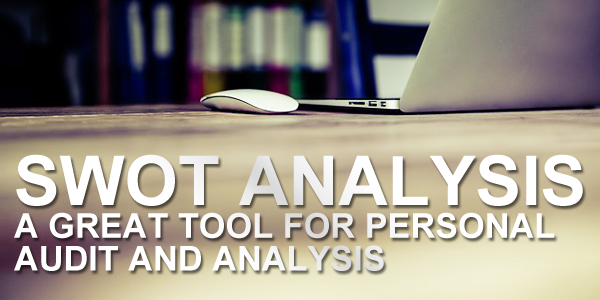SWOT, short for Strengths, Weaknesses, Opportunities and Threats, is a simple four step evaluation process that allows businesses to evaluate their strategic positions and environment. However, this can also act as a personal tool to help you evaluate yourself and mark your progress in your career. SWOT analysis is all about understanding your internal potential as well as limitations in an external environment and allows you to weigh the positive against the negative factors that can affect your chances of success.
How does it work?
SWOT analysis breaks down your process of analysis into four exclusive quadrants that together define where you should go next. While being effective, SWOT is subjective. You can use this method to your advantage especially when for strategic planning.
- Source of information
- Reversal of weakness
- Building up strengths
- Maximising opportunities
- Overcoming threats
- Identifying core competencies
- Setting objectives
With SWOT, you can learn from the past and familiarise with the present to plan for the future. Unless there are sudden and unexpected changes in your situation, you can rely on SWOT to help map out your personal or organisational progress. If you are ready to get started with SWOT analysis, this simple breakdown will help you understand more.
Strengths
These are the qualities that help you accomplish your personal or professional goals and on the basis of which, you can place your continued success. Your strengths can range from minor to major, tangible or intangible qualities and include everything from your area of expertise, factual knowledge, ideal employee traits etc. Any trait that is beneficial to you as an individual and your company as a whole is considered a strength. Additionally tangible strengths include financial resources, lack of debt, process capabilities, human competencies.
Weaknesses
Weaknesses can be defined as the qualities that prevent you from accomplishing your tasks and goals or reaching your full potential. These traits have a negative influence on your abilities and include factors that prevent you from reaching the ideal standards. Like strengths, weaknesses too come in tangible and intangible forms and can range from depreciating machinery, lack of facilities, large debts, high employee turnover, poor decision making to shallow understanding of human competencies. These weaknesses should be identified, minimised and eliminated.
Opportunities
Unlike strengths and weaknesses that are inherent properties, opportunities are a product of the environment. Opportunities arise when you or your organisation can benefit from the existing conditions, allowing you to plan and execute precise strategies that bring profits or other results. Making use of opportunities can give you a competitive edge and in turn, gear you for future challenges. These opportunities can arise from competition, increased demand, technology and other existing forms of revenue.
Threats
Threats are similar to weakness in only one way – they jeopardise the potential and profitability of the organisation or individual. However unlike weaknesses, threats are always external factors that often not in control of the one they affect. Threats cannot be controlled.
